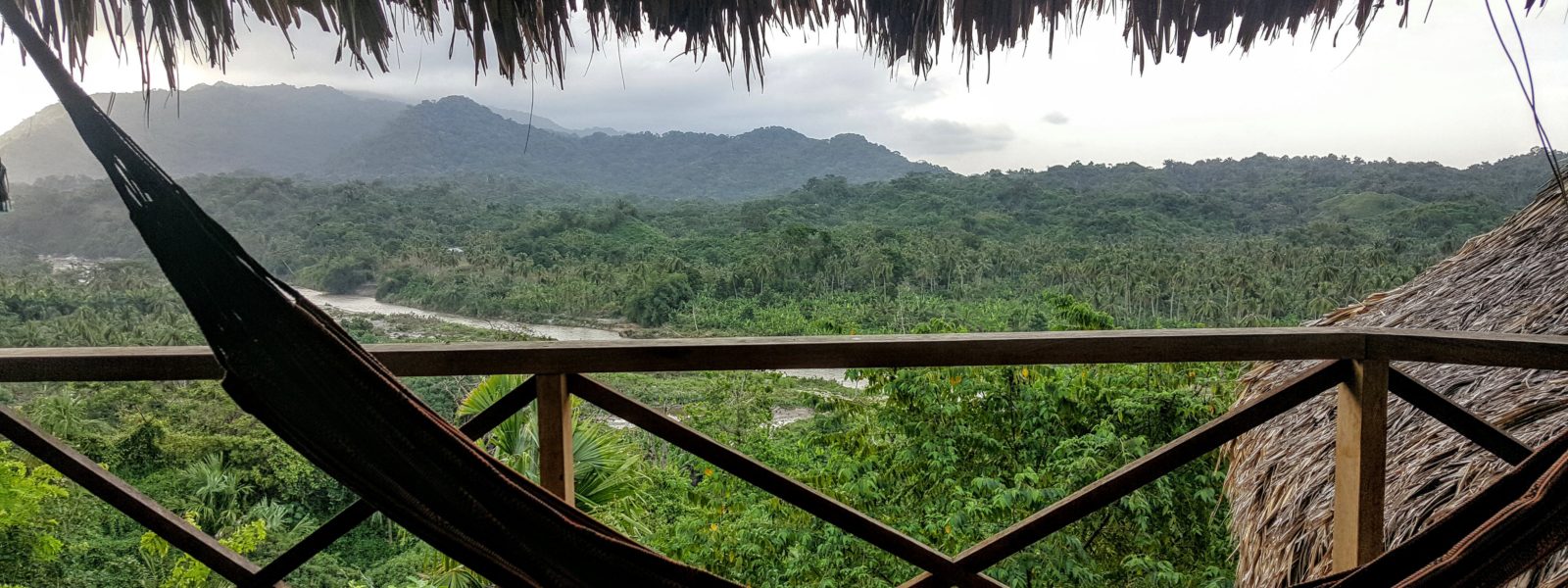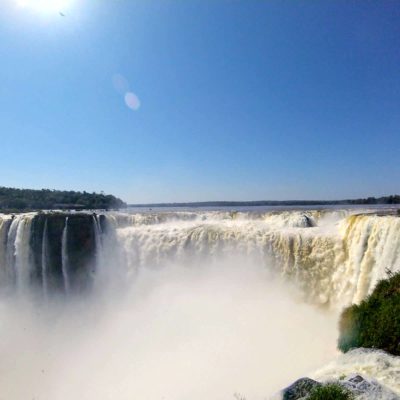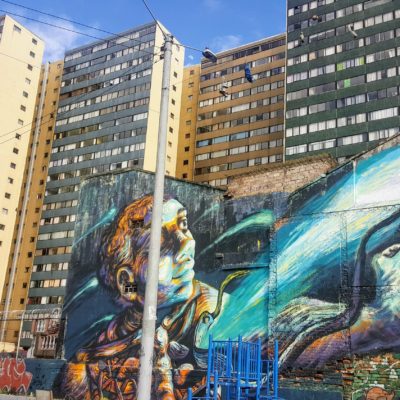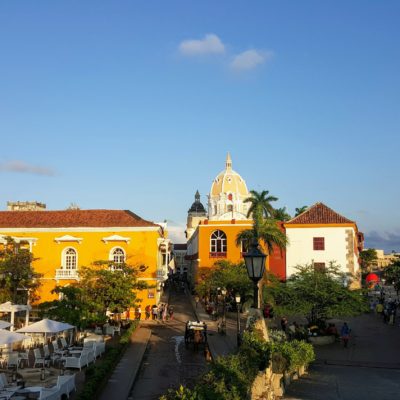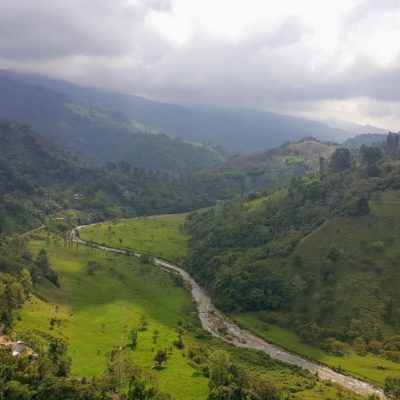Santa Marta is a city on Colombia’s Caribbean coast and is mostly used as a jumping point to other spots either on the coast or inland. We chose to head to the nearby village of Minca and then to Tyrona National Park.
Minca
The little village of Minca in the hills above Santa Marta is a well known gem on the backpacker trail. Minca offers chill time (preferably in a hammock), beautiful views, walks and coffee plantations. The temperatures are also more moderate than on the coast so you get to enjoy cooler afternoons and evenings, especially when the clouds roll in.
Minca ended up being one of our favourite spots in Colombia. The location itself was beautiful but what made our experience more special was our hostel, Mundo Nuevo (translated as New World). Whilst Minca has a great choice of hostels, we decided on Mundo Nuevo based on a recommendation.
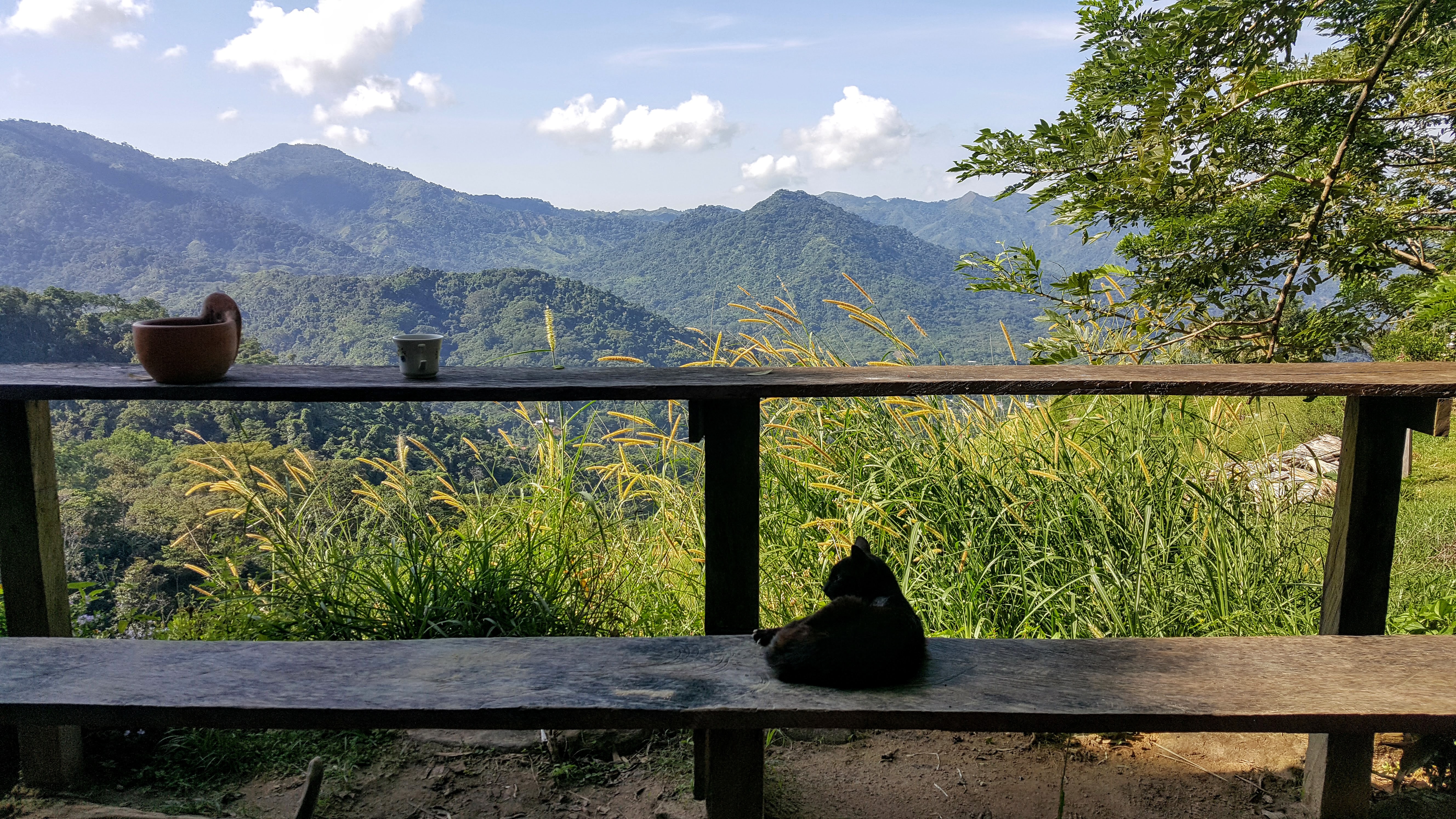
The hostel is an eco-lodge / farm and generally a place dedicated to sustainability and preservation of the environment. We haven’t stayed somewhere like this before and we were not sure what the vibe or the communal meals (normally not our thing) would be like. But we loved everything about this place. Most notably the huge vegetarian meals, chatting to other travellers, and the punta (point) where everyone gathered every evening to watch the sunset and where we headed every night after dinner (usually with a bottle of red) to watch the spectacular lightening show. It really was a lovely new world and we were sad to leave after our four nights’ stay.
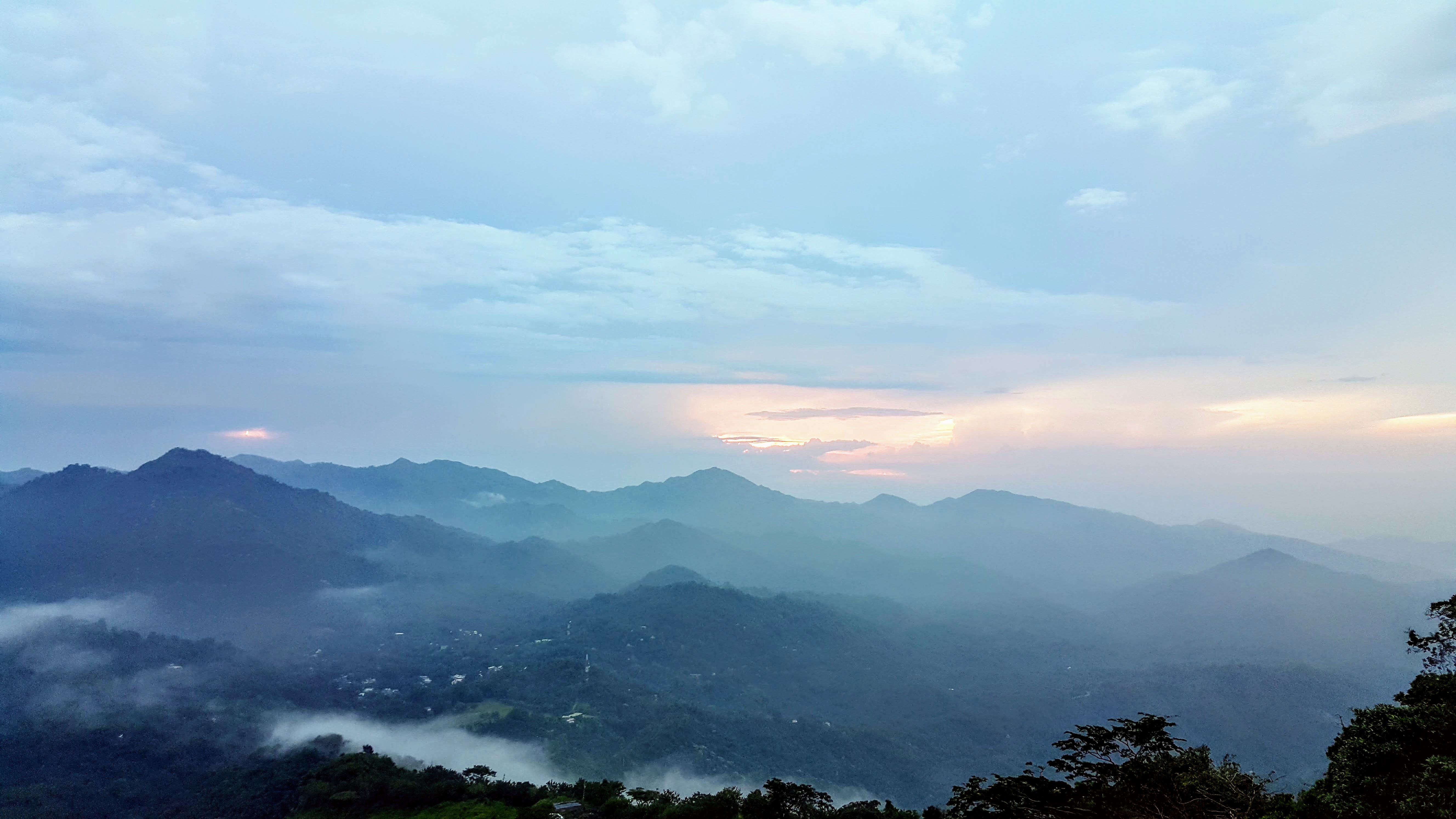
In between hammock time we headed to Pozo Azul, a waterfall about a two hour walk from Mundo Nuevo. We woke up early and did a bird watching tour, spotting a couple of toucans (which are common in this area) from afar. The tour wasn’t particularly exciting but our guide was lovely and as it was just the two of us we got to practice our Spanish which was a nice bonus. Another morning we headed to a lovely lookout.
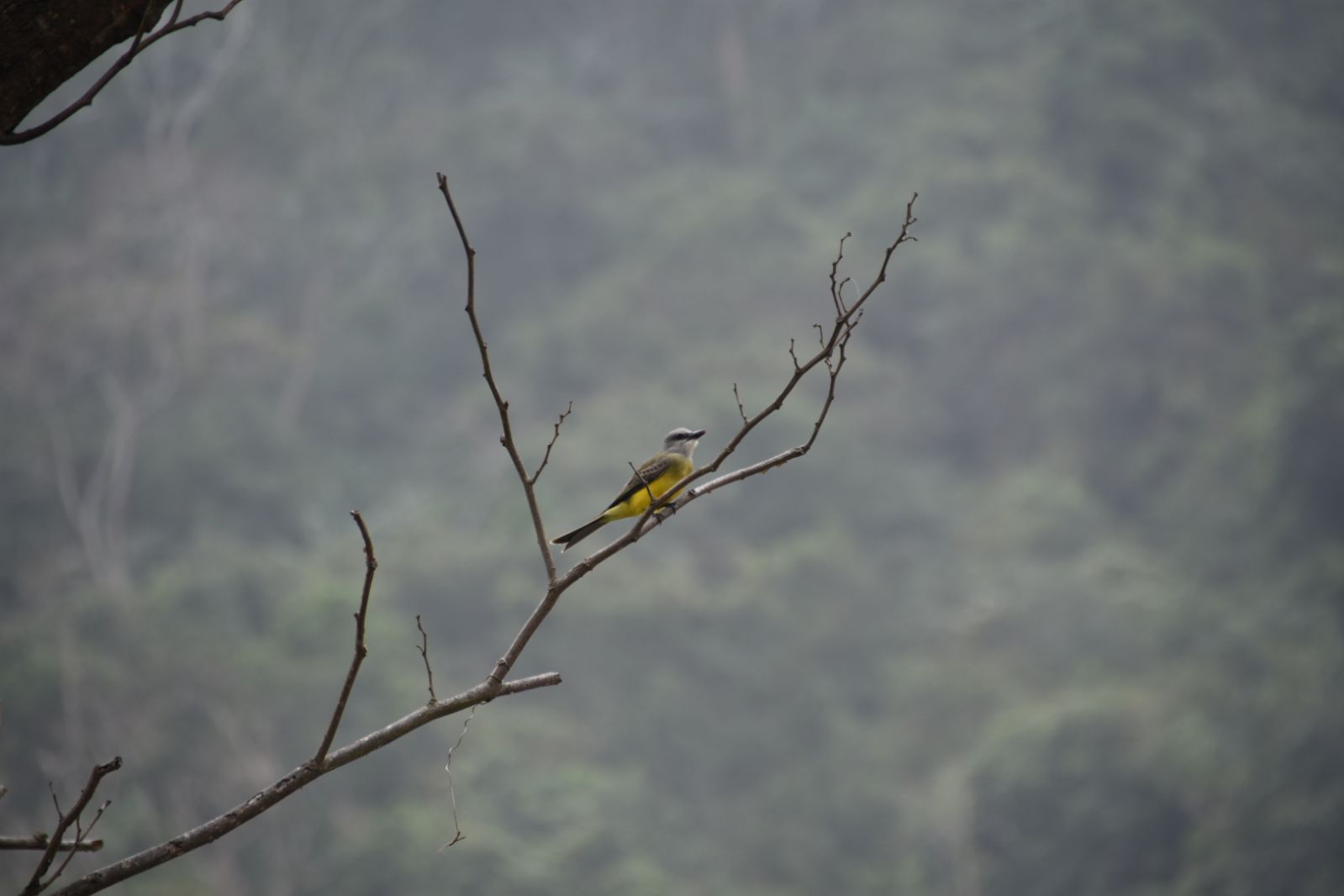
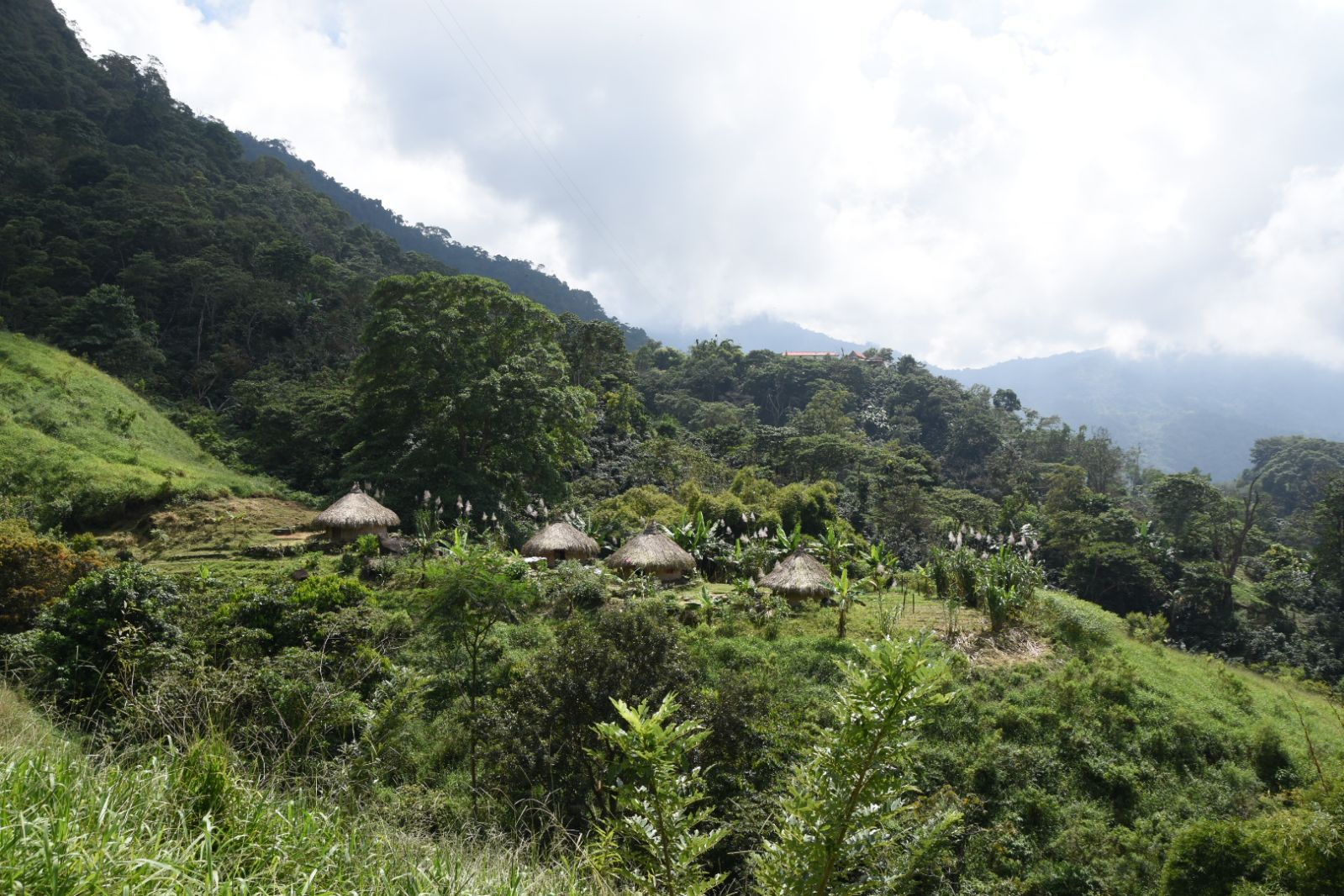
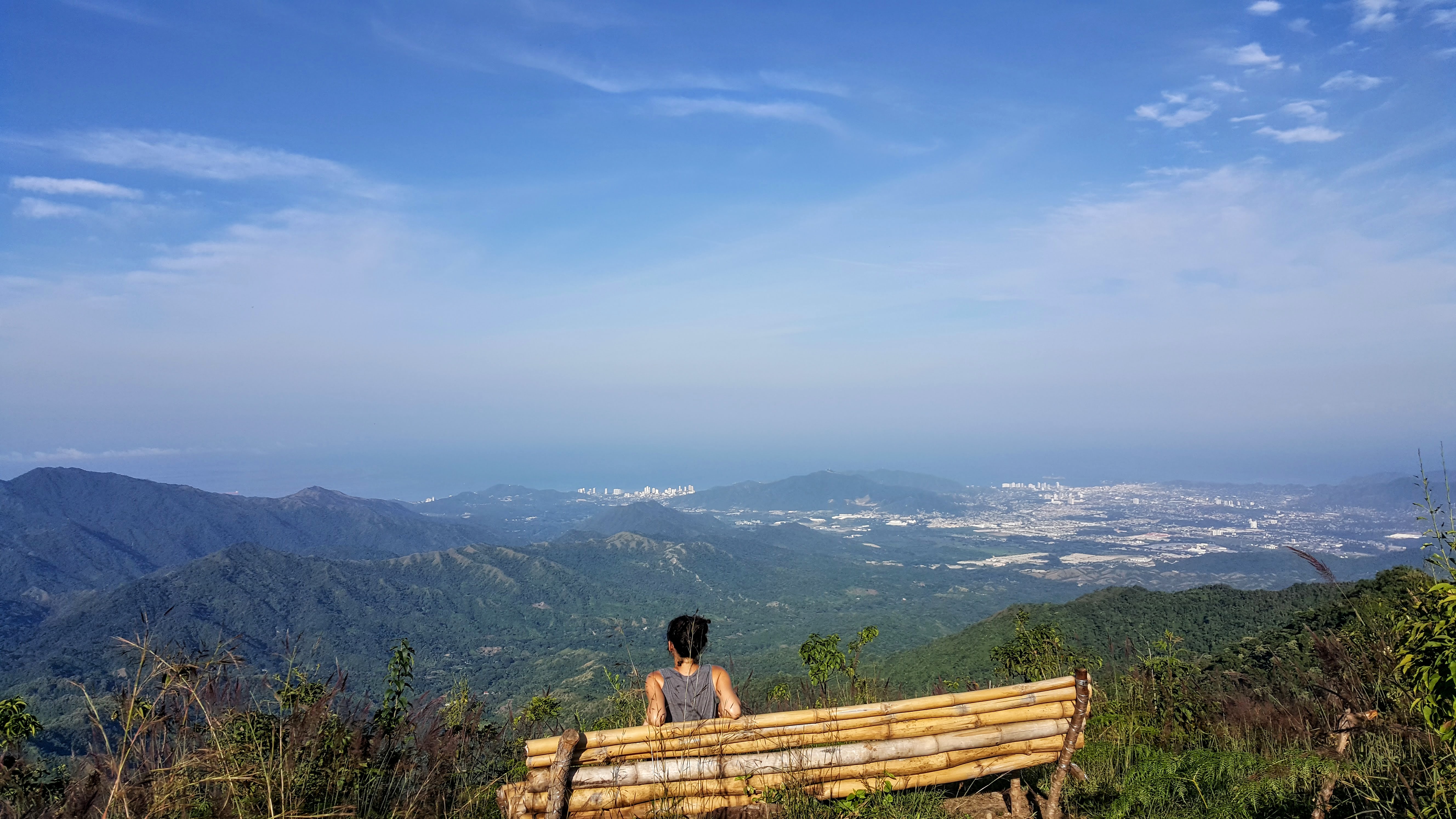
The Minca hills are full of coffee plantations and Mundo Nuevo is located close to a working finca (farm) that offers coffee and chocolate making tours. Unfortunately the day we went the tours weren’t running and we didn’t go back, but we heard from others that the tours, in particular the chocolate one, were good. Even though the tours weren’t running we did enjoy a coffee at the finca and soaked in the views and birdlife for a while.
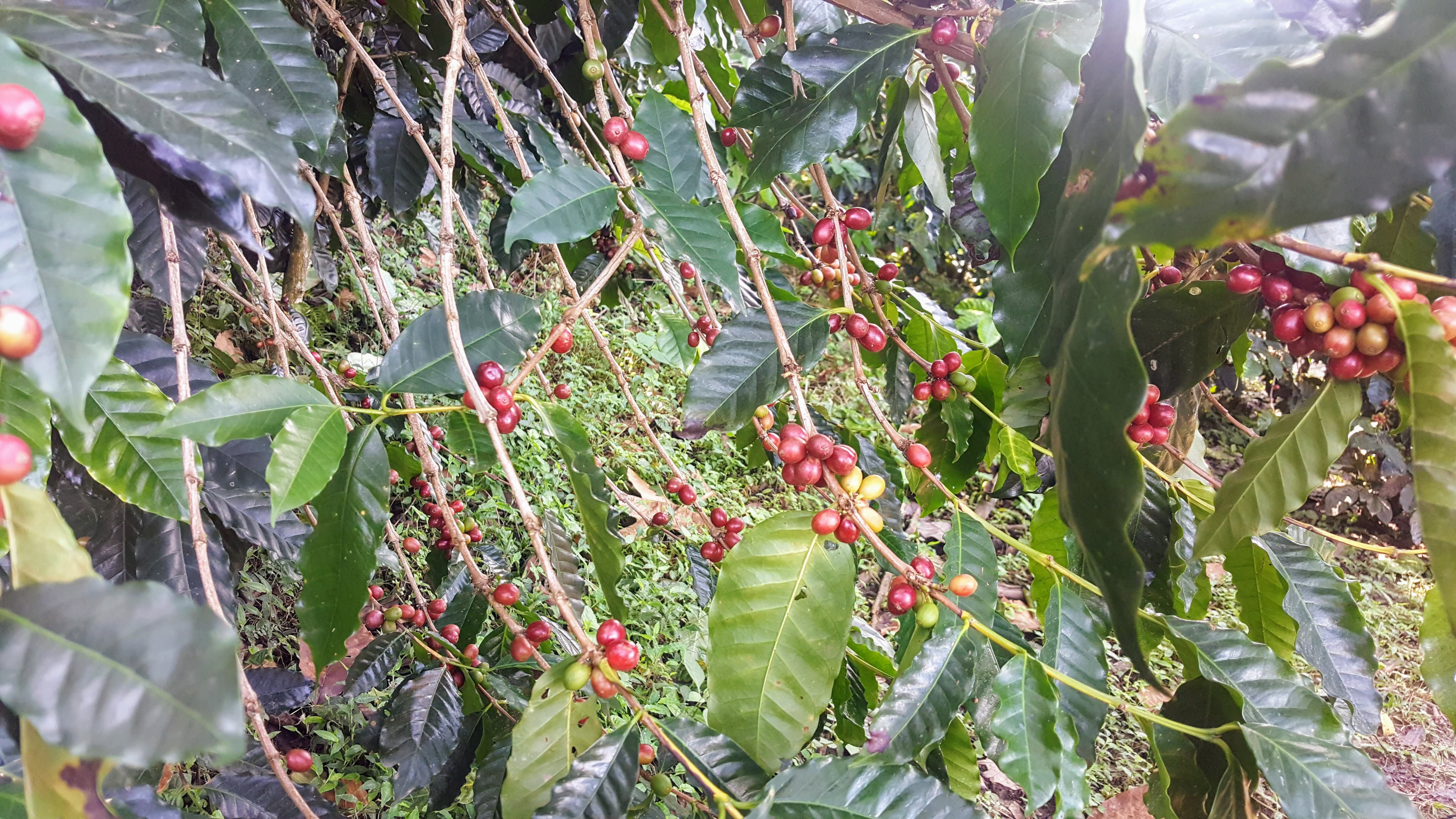
Minca is located about a 45 minute drive from Santa Marta and Mundo Nuevo is a further 45 minute walk up hill. Having a slow start to the day and coming all the way from Cartagena (which is a four hour drive from Santa Marta) by the time we started our walk up the hill the sun was setting making for interesting 20 minutes or so walk in the dark. It’s definitely a good idea to arrive when it is still daylight! For those who don’t fancy walking and/or have their large rucksacks it is possible to take a motorbike up but the road is not in great condition so it is not particularly safe. Our friend who recommended the hostel fell off the motorbike and got a pretty bad burn from the exhaust. We opted to leave our big rucksacks in Cartagena and did the walk up.
Tayrona National Park
This national park is located on the Carribean coast and is a popular destination for its beaches, on some of which you can camp on or sleep in a hammock. It is also possible to visit the park as a day trip either from Santa Marta (one hour or so drive) or by staying in one of the hostels / hotels close to the entrance to the park. There are also boats that go from Taganga.
We decided to stay at a hostel near the park so that we could beat the day trippers and get to the park for opening time. There are a number of entrances to the park and it takes about two to three hours to hike to the beaches. The main entrance is El Zaino but to avoid the crowds and the mud (the trails get pretty muddy during the rainy season) our hostel recommended going in at the Calabazo entrance. The walk to the beach from this entrance is a little longer but it takes you via the tiny village of Pueblito and straight to Cabo San Juan, the park’s main beach and where we intended to stay the night.
We decided to follow the hostel’s suggestion and our hike began with a nice and not particularly muddy path… and then we reached the boulders. The reason this path is not muddy is because most of the way you have to climb over boulders which at times are quite large. Having the long legs advantage, Dale had to help me at a few spots where the boulders were particularly steep and surrounded by gaps which you definitely wouldn’t want to fall into.
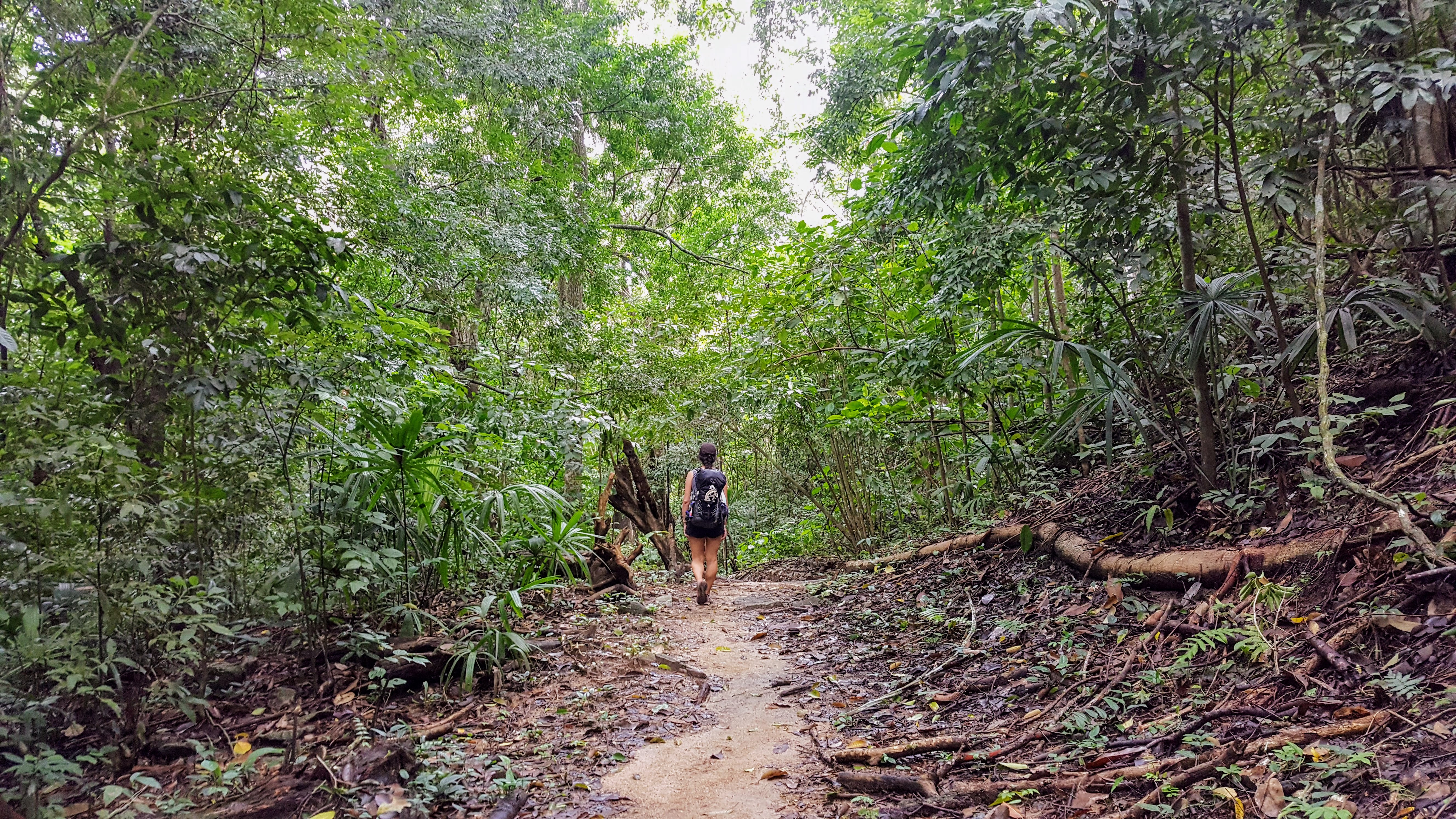
With the heat and the climbing it probably took us close to three hours to reach Cabo San Juan. We were looking forward to a nice beach but arrived to small stretches of beach full of people. Maybe it was just the timing of our visit and the fact that the area had a massive storm the night before or maybe we are just massive beach snobs but we decided to give the overnight stay a miss.
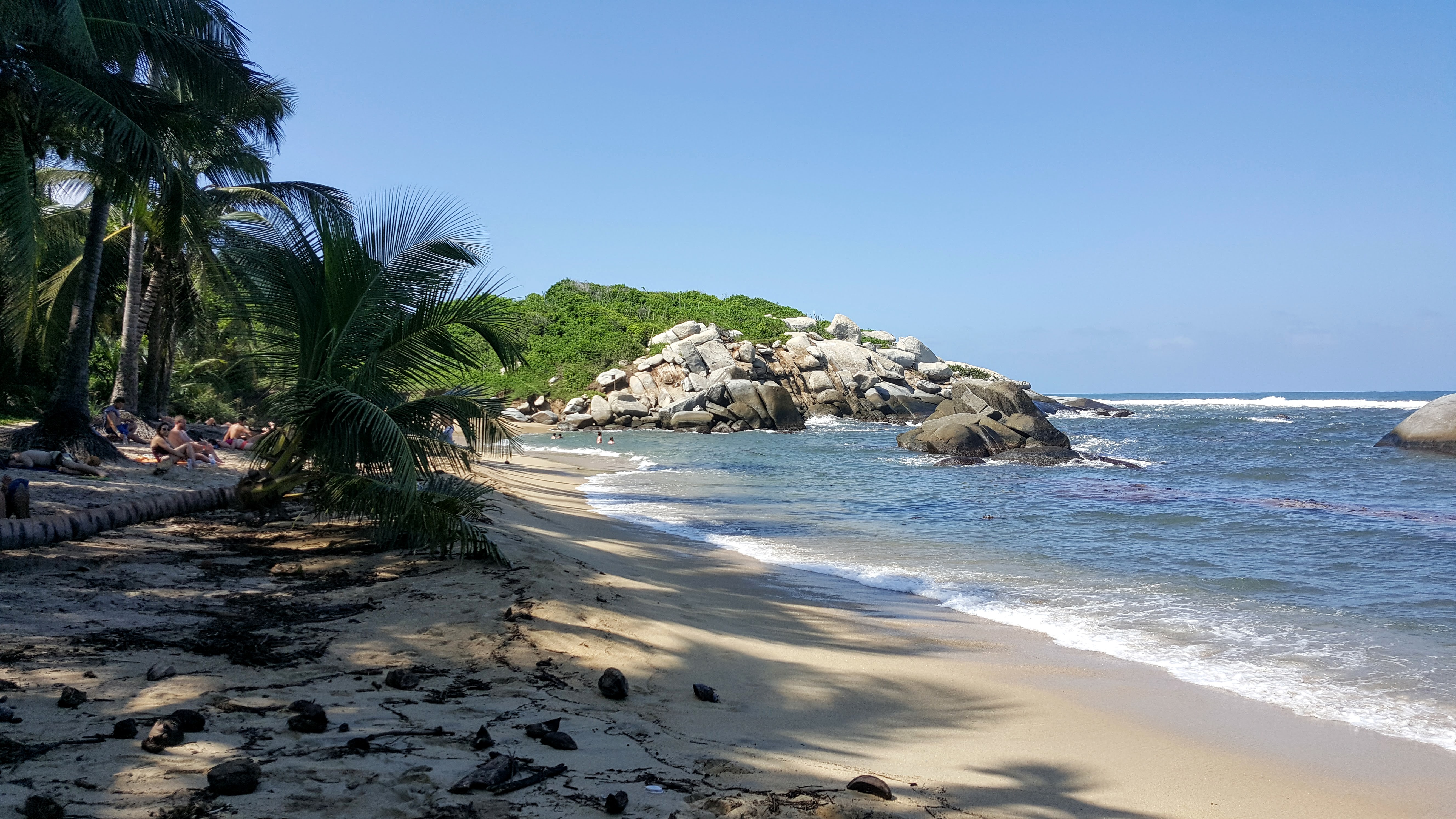
Out of the park we hiked via the main route, stopping at what we thought was a much nicer beach for a dip (but there was no camping on this beach). As expected the path was muddy especially as it is also used by horses, which people can take rather than walk. At times the mud was pretty deep, almost reaching up to my knees, making it impossible to walk in shoes. So we made the two hour walk out of the park barefoot, hoping that we were stepping in mud and not something else…
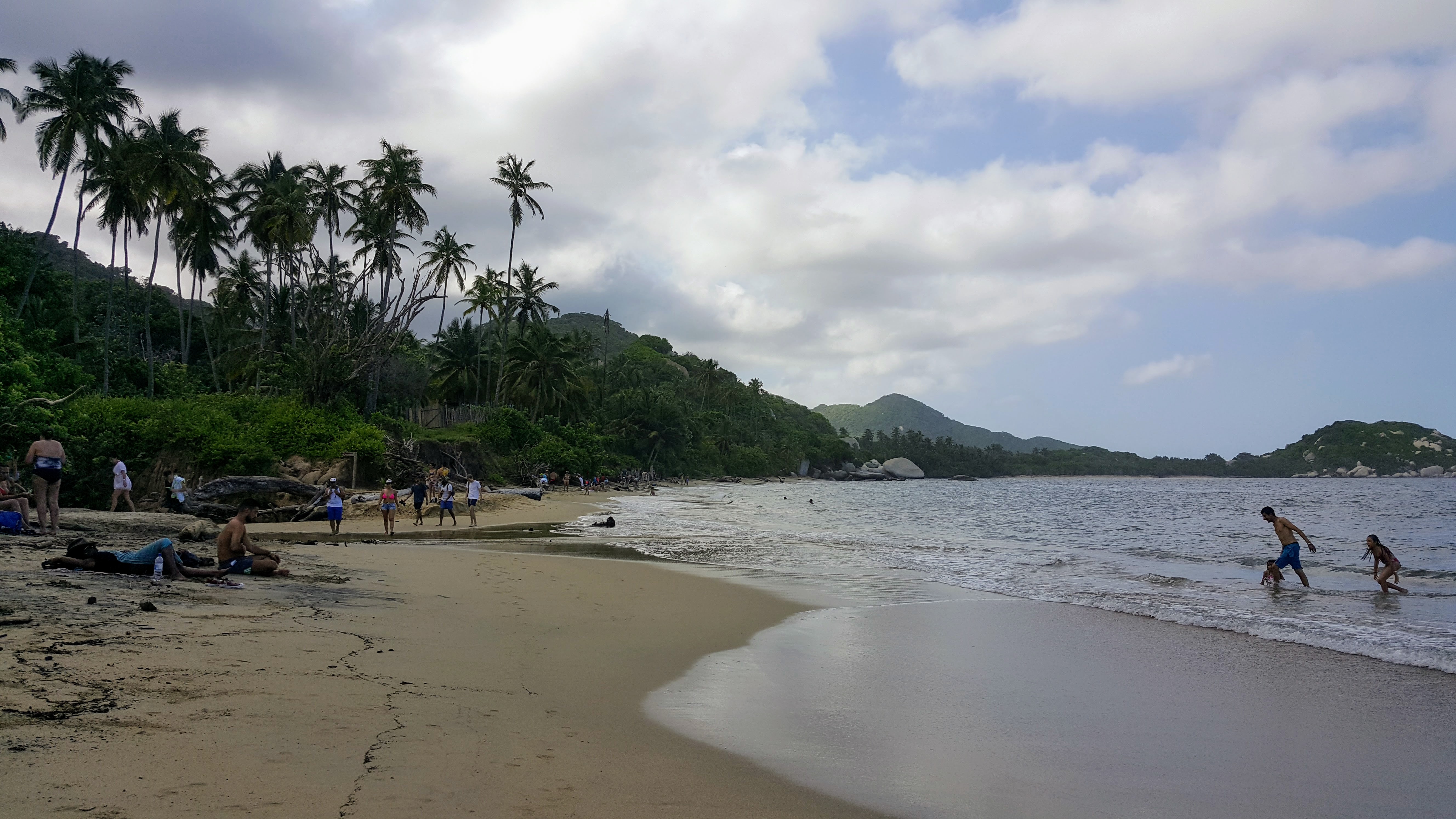
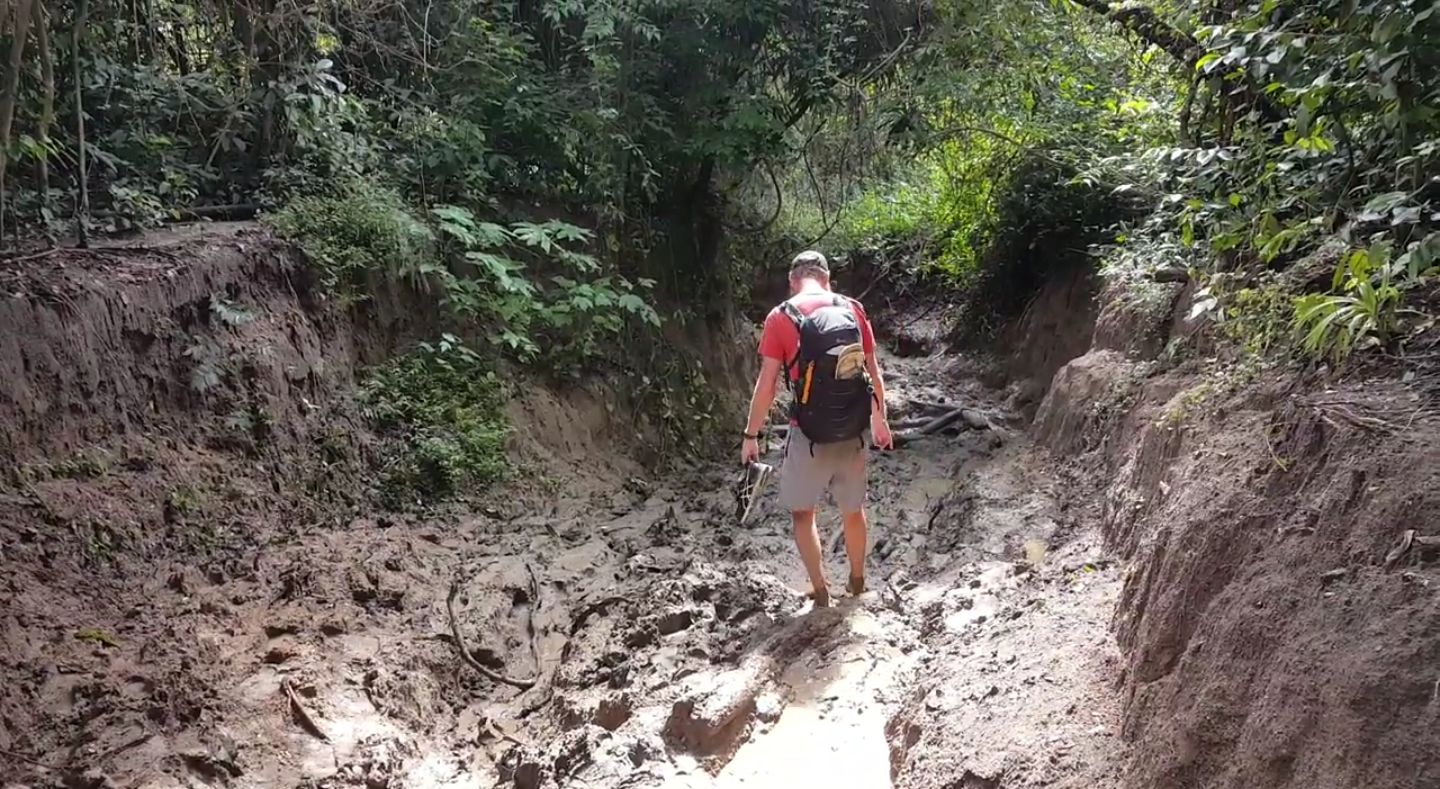
Whilst we didn’t love the beaches at the park, we did really enjoy the walk. As our plan was to sleep in the park we didn’t have accommodation booked for the night. And with our hostel being booked out, we hopped onto a bus to Santa Marta booking a random cheap hotel for the night where we could have a good shower.
Near Tryona National Park we stayed at The Journey Hostel, a small hostel run by a brother and sister. At the time of staying the hostel only had two private rooms and a small dorm but they were expanding. The meals were communal again and pretty decent and the owners and volunteers were very friendly.
Apart from the park itself, there are a few activities that you can do in the area including tubing and a number of walks with one being to a waterfall. To my disappointment we didn’t get to tubing but we did check out the waterfall.
The waterfall was more impressive than I expected, consisting of a number of terraces and pools where you could swim. You can easily take a picnic and spend a whole day there, which is what a lot of the locals do. Just be careful of the snakes! Dale had a close encounter with one on our way back. We probably should have taken the group of terrified locals (one almost hysterical) as a sign that something was going on but we casually strolled past with Dale coming within a few centimetres of grabbing the snake when he used a tree branch for balance. The locals grew even more hysterical and we eventually clued on.
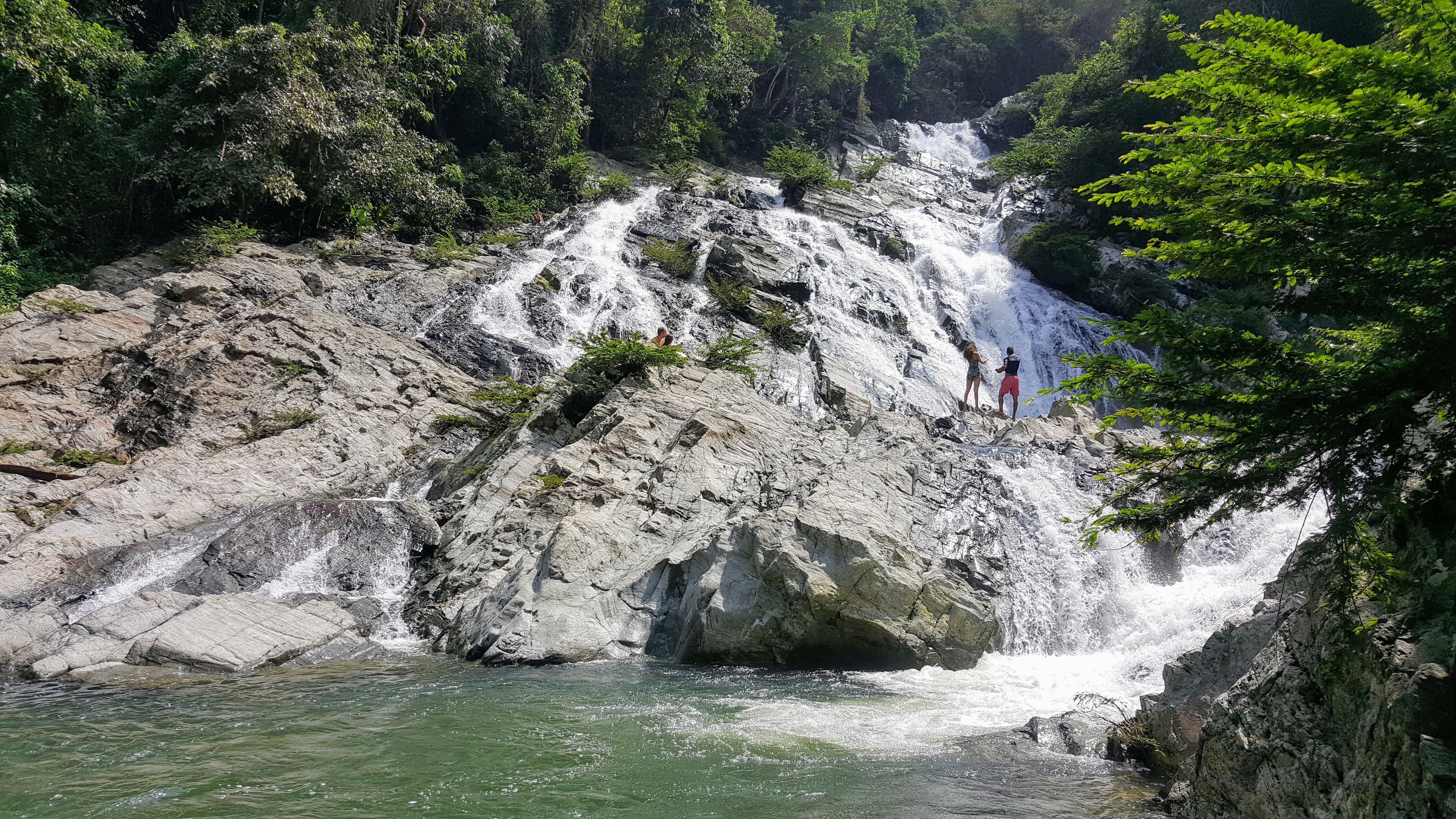
Santa Marta
In Santa Marta itself we only briefly changed buses and then by necessity spent one night. But arriving late evening we didn’t really get a chance to explore or see the city. What we did see, however, we didn’t love. It is probably unfair to judge a city having spent such a brief time there but we did it anyway. To us Santa Marta felt busy, quite dirty and a little dodgy. We were ready to leave after our brief one night’s stay.
Next: San Andrés island.
